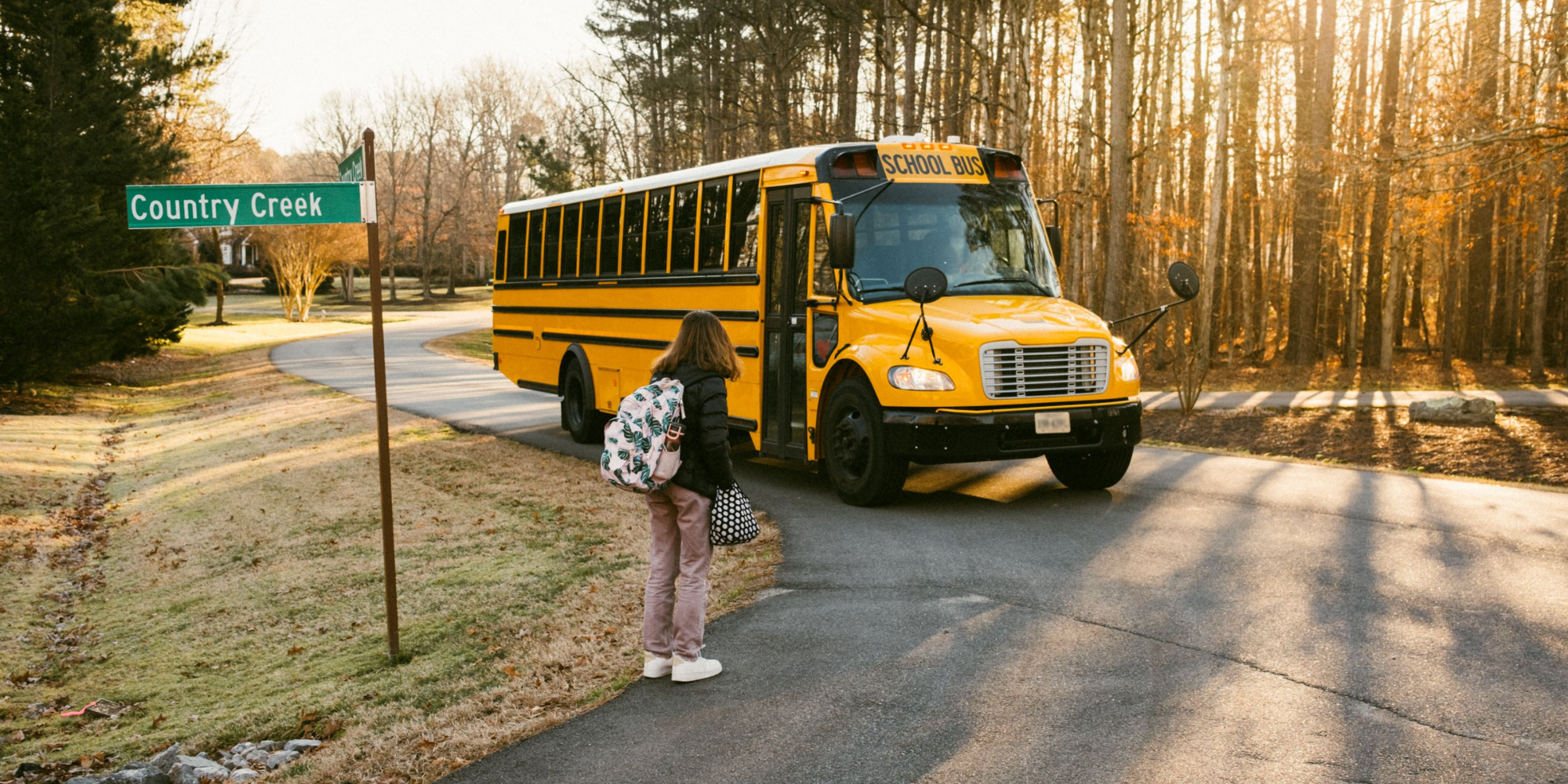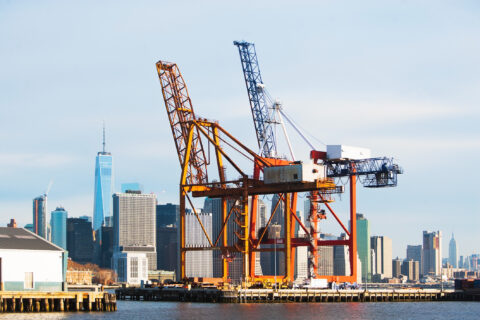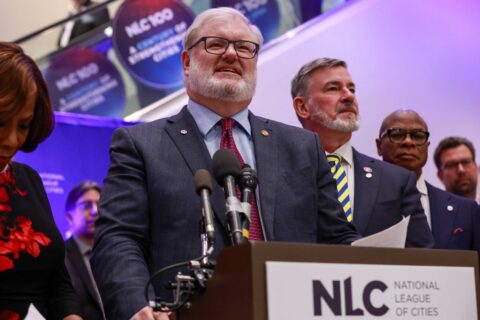Federal funding is available for municipal leaders looking to reduce carbon emissions in public transportation fleets. The transportation sector is the largest emitter of carbon in the U.S. and funding from the Bipartisan Infrastructure Law (BIL) and the Inflation Reduction Act (IRA) is available to help local bus systems, including public school buses, become zero or low emissions.
The U.S. Environmental Protection Agency’s (EPA) Notice of Funding Opportunity (NOFO) for the Clean School Bus program for the fiscal year 2023 opened April 24, 2023, and closes August 22, 2023. The Clean School Bus program, funded through the BIL, will bring $5 billion over five years for zero-emission or alternative fuel school buses and the infrastructure needed to fuel these vehicles. The deadline for submitting any question to EPA is August 9, 2023. Interested entities should check out EPA’s past Clean School Bus webinars including the 2023 Grants NOFO information session #1 that occurred May 10, 2023, to learn more.
Additional bus related programs in BIL and IRA include:
- Low or No Emission (Bus) Grants: $5.6 billion for capital funding for low or no-emission bus projects.
- Clean Heavy-Duty Vehicle Program: $1 billion to replace heavy-duty vehicles with zero-emission vehicles, zero-emission infrastructure, and workforce development. $400 million will go to communities in nonattainment areas.
- Energy Efficiency and Conservation Block Grants (EECBG): zero-emission transportation and associated infrastructure is an eligible activity.
For a step-by-step guide on the details of implementing an electric vehicle (EV) school bus fleet, visit the Department of Energy’s Electric School Bus Education Center.
While every municipality may not have direct control over their local transportation bus systems, they can work with other local leaders such as county or school board officials to commit together to zero or low-emission buses. The Biden Administration has made it clear that they will favor projects that include a wide range of stakeholders with an interest in reducing the impact of climate change and prioritize historically underserved areas. Additionally, as zero to low-emission buses are purchased and used, new EV infrastructure to power these vehicles will need to be installed. This is another key conversation where municipal leaders have a role to play in advancing the creation of equitably located EV charging stations in their communities. For more information on EV charging, local leaders can check out NLC’s primer and guide on EV charging.
School bus fleets should be prioritized for electrification for several reasons. According to the American Lung Association, children are especially susceptible to negative health outcomes from diesel exhaust. This further drives inequity concerns, as children from disadvantaged communities are already exposed to a higher pollution burden and are more likely to have asthma.
Municipalities Already Adopting Clean School Buses
The first round of the Clean Bus Program in 2022 was a rebate program to replace existing school buses with clean and zero-emission models. Almost $1 billion in rebates were awarded to 400 school districts across the country. The EPA created an interactive map to view all the winners. Winner examples include Green Ridge Village school district, MO, which was awarded $790,000 for two electric school buses and Glades, FL, which was awarded more than $5 million to rebate 13 electric school buses.
Mayor Wu of Boston, MA, in April 2022 announced an electric school bus pilot program that deployed 20 buses during the 2022-2023 school year. This initial procurement is the first step in the city’s total electrification of the school bus fleet by 2030. The initial procurement funding comes from the operating budget of Boston Public School and funds from the American Rescue Plan Act. A “train the trainer” workforce program will be part of the pilot as Boston’s Public Works Department, Boston Policy, and Boston Public Schools launch a maintenance program at a local Technical Vocational High School where mechanics can learn how to safely service and repair EVs.
Additional Ways to Move to a Low or No Emission Bus Fleet
Adopt an ordinance committing to low-emission public vehicles
One of the first steps municipalities can take to decrease emissions in the transportation sector is to adopt a zero-carbon emissions resolution or one that specifically targets publicly owned buses. According to the World Resource Institute, school buses account for 80 percent of buses nationwide and electrifying the entire feel would reduce U.S. greenhouse gas emissions by 8 megatons a year. Adopting an ordinance creates the first step to begin planning and working with community partners, such as utility companies, to advance zero or low-emission bus mobility options. If local leaders can adopt an ordinance along with their county or school board, even better, as all three can begin to work together on purchasing agreements or start a pilot project.
To see where electric school buses have been adopted across the United States, visit the World Resources’ Electric School Bus initiative.
Think about the impact on the electric grid and how to prepare (V2G programs).
Working with utilities to prepare the local electricity infrastructure is an important step before EV school bus programs begin since the peak electricity demand is likely to increase significantly. Set up an initial meeting with the electricity provider to outline goals, as well as highlight the co-benefits both the municipality and utility will receive. It is important to emphasize that while there are upfront costs involved with potential transmission upgrades for increased power flow, many benefits are realized by both parties through managed charging.
Managed charging is an agreement between the user and supplier to only charge during certain times, whether that be during times of less energy demand or higher renewable energy production. Managed charging is an attractive option with school buses with their consistent daily and yearly use and charging schedule. This predictability also makes them a prime candidate for vehicle-to-grid (V2G) programs, in which energy flows back to the grid from the EV battery, acting as a distributed energy source. V2G has the potential to reduce the need for additional generation and transmission infrastructure buildout, saving energy providers and their customers’ money.
Run a pilot if needed
For communities with limited resources, an initial planning or small-scale project to begin may be the most beneficial. When thinking about a pilot for zero or low-emission buses local leaders should consider their existing policy landscape, an analysis of the cost and benefits and bring together the stakeholders. Once the pilot has been launched, collect data to update the cost-benefit analysis. With the conclusion of the pilot, municipalities should consider financing options, such as the federal funding listed in this blog along with the setting of actionable targets for further commitment to zero or low-emission buses.










